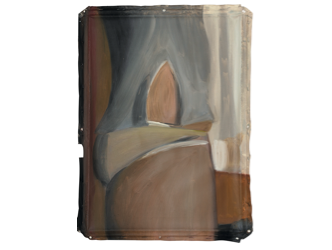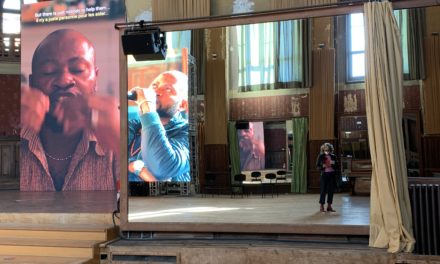Self-portraits
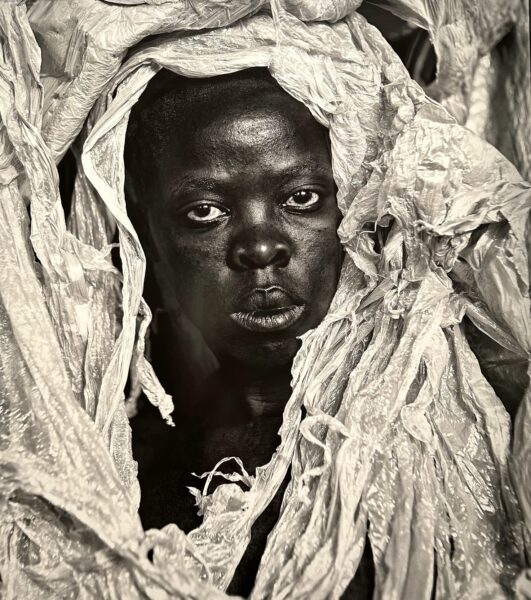
For a few years now her very dark self-portraits, in black and white, depicting endless variations on the image of an artist who accessorizes her apparitions with the aid of objects from daily life, have been omnipresent on the global contemporary art scene. From the Venice Biennale in 2019 to the Isabella Stewart Gardner Museum in Boston in 2022, via the Tate in 2021, they have become a massive fixture in the collective memory of global contemporary art.
The Dark Lioness
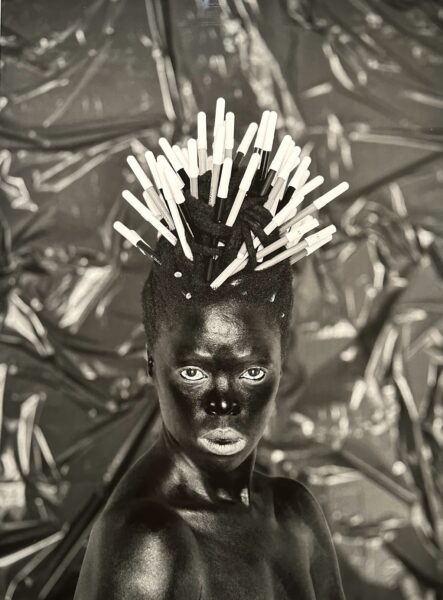
The artist is Zanele Muholi, who was born in 1972 in South Africa. Her self-portraits are brought together under the Zulu name of “Somnyama Ngonyama” meaning “The Dark Lioness”. She is a self-proclaimed visual activist rather than a photographer. This is why, the artist states that the aesthetic dimension of her work is just one tool in the service of her mission.
Visual narrative
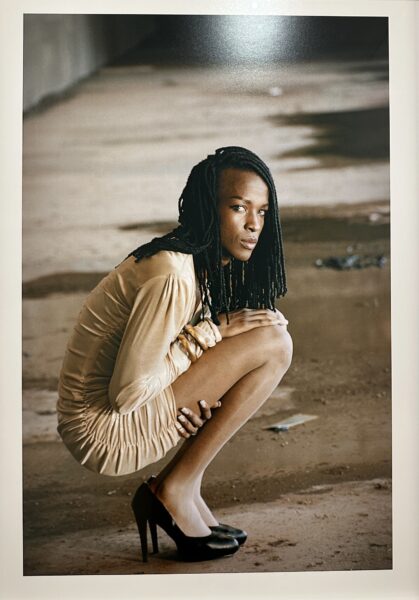
“It’s one thing to do a beautiful image but it needs to say something. It needs to have a visual narrative. In one image, I’m covered with tubes around my hair and my body. It’s named after my sister when I received the news that she died. Each photo is based on an experience which I memorize through it.”
Maison Européenne de la Photographie
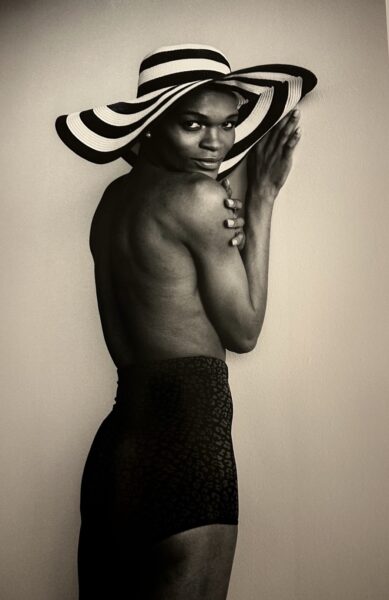
Her exhibition, featuring 200 prints at the Maison Européenne de la Photographie in Paris (MEP), is visually powerful. By using a very limited range of means and colours, she has managed to create a style of image that is driven by new forms, in the great tradition of the self-portrait. The colour of her skin, a dark brown, is a major element of her aesthetic.
David Goldblatt
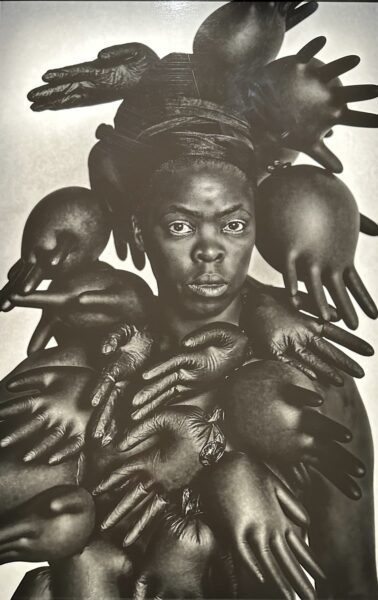
“I am fighting for a self-love. My mentor, the photographer David Goldblatt, helped me to confront my ‘blackness’ (See here a report about David Goldblatt). The fact that I became a visual activist as a photographer is through that man. I met Goldblatt around 2005. It was easy to speak with him and to show him my work without him being judgmental. I studied in Toronto through his scholarship. But there is still a lot to do.
White Art history
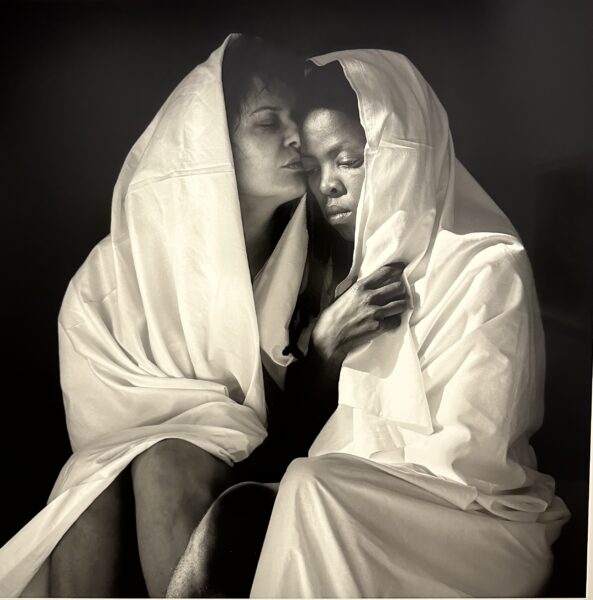
Art history has been written by white writers. There also hasn’t been a Queer art history integrated into this narrative.” She has also asked the MEP to use inclusive writing in her presentation. She reveals in the exhibition catalogue: “When I was going through an emotionally difficult time, holding a camera gave me a chance for recovery (…) I realized there were few images showing people like me, people who were black lesbian, gay, bisexual, trans, queer, intersex and gender non-conforming.”
Love, beauty and wounds
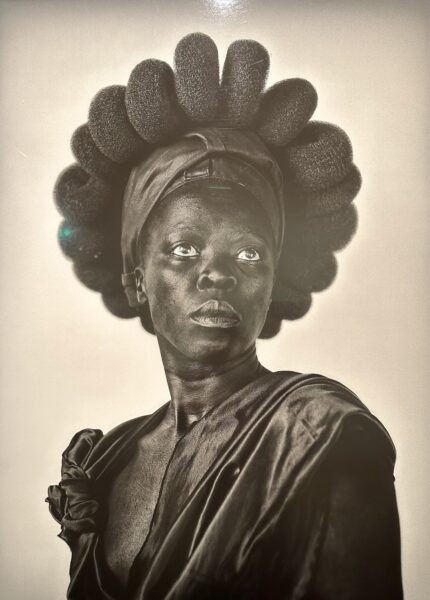
The MEP exhibition talks about love, beauty and wounds. We see several series, among others, featuring beauty contests in the Queer community or couples in scenes of romantic intimacy. “For each image you see here it’s a biography of a people. They form part of a different heritage. Before the framed, the frozen image that you see, first you ask yourself: who are they? Where do they come from? How are they so modern. We need to create images which respect the people that were often degraded or undermined or insulted. People who are often at the fringes of society,” she explains.
A child like me
For the director of the MEP, Simon Baker, Muholi’s photos create a necessary unease, “which forces us to reflect and revise our judgment.” To which she responds: “Here I am addressing everyone to say: and if you had a child like me, what would you say to your homophobic friends?”
Going forward Zanele has a dream: to open a museum “filled with art that has meaning for me.”
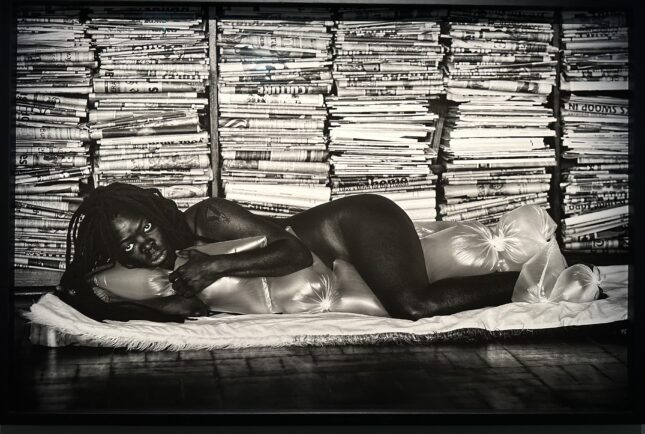
Until 25 May, Maison Européenne de la photographie, Paris. www.mep-fr.org/
Support independent news on art.
Your contribution : Make a monthly commitment to support JB Reports or a one off contribution as and when you feel like it. Choose the option that suits you best.
Need to cancel a recurring donation? Please go here.
The donation is considered to be a subscription for a fee set by the donor and for a duration also set by the donor.


